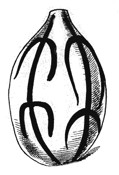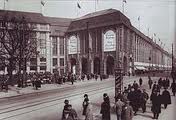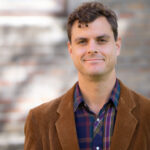An Introduction To Three Nambikwara Ethnohistories
January, 2019: Edwin B. Reesink – Allegories of Wildness – Three Nambikwara ethnohistories of sociocultural and linguistic change and continuity – Rozenberg Publishers – ISBN 978 90 3610 173 8 – 2010 – will be online soon.
International fame for the Nambikwara came from the central role they play in the work of the late Claude Lévi-Strauss. In his most popular book, Tristes Tropiques, over fifty years ago, he already had painted a particular picture of the Nambikwara way of life. Until the end of his long life this great scholar reminisced about his formative years in anthropology and the influence of the several Indian peoples he encountered during his travels in the interior of Brazil. In effect, the Nambikwara, as seen in the quote, occupy a special place, one not just of scientific interest but particularly one of a sympathy and feeling sometimes not readily associated with this anthropologist. At the time of the travels by Lévi-Strauss and the other people of his expedition, the dry season of 1938, the Nambikwara happened to be in an intermediate phase of their history: enjoying their political autonomy yet already shaped and devastated by the encroachment of Brazilian society.
The sparse, intermediate but regular contacts with Brazilians made them susceptible to being devastated yet further by epidemics. Previously, from 1907 onward, the Brazilians by means of the so-called Rondon Mission penetrated into the vast territories in which lived a large number of different local groups who each considered themselves to be different from their neighbours. Rondon, the State and later researchers recognized this diversity but ultimately still tended to maintain the idea of “one Nambikwara people”. Rondon’s purpose was to build a telegraph line to the Madeira River and hence to connect Amazonia with the rest of the country while, concomitantly, preparing to take possession of an enormous territory inhabited by a number of independent peoples. Rondon and some of his people succeeded in establishing a pacific relation with a number of local peoples of the Nambikwara ensemble: mainly those of the Parecis Plateau and north of Vilhena (in what is now Rondônia).
*
All I can say to you is that the few months I spent among the Nambikwara may have been those I retain the best memories of, among all of the contacts I had with other populations in Brazil. (…) there has been no Indian population I have known that has attracted so much and with whom I felt so close.
(Lévi-Strauss; from interviews with Marcelo Fiorini, end of 2004 and beginning of 2005, published in Ethnies nr. 33-34, pp. 108-9; my translation).
*
The building of the Telegraph Line and the establishment of stations and agricultural activities to support the annual expeditions and the posterior sustenance of the people manning the telegraph posts, already meant a significant penetration into their lands. The best known Nambikwarist, the late David Price, estimated the overall territory of all local peoples at this time to have been some 500.000 square kilometers, something like the size of France. One might say that the actual land taken in the beginning represented a very small amount of this total. However, the peaceful relations established with a few villages already implied that contagion of unknown diseases would necessarily follow. The very fact that Rondon represented the Republic – that is so-called “national sovereignty” – when he penetrated these lands and simply took possession of what he needed is also highly significant. The Line was a line of colonialist penetration initiating the expropriation of natural resources and potential genocide which such a venture always engendered. Rondon knew he was entering the homelands of another people and, being uninvited, felt violent reactions against him and his subordinates were justified. Hence he was determined not to retaliate and to find ways of establishing and maintaining friendly relations. Yet there was never any doubt that the Republic came first and was entitled to take factual possession of what “already belonged” to it. On the other hand, Indians were people, and precisely because of that human condition could be elevated to higher levels of “civilization”, even to be “citizens”: if the Republic subtracted territory from “its Indians” then it should take care of them by “civilizing” these people and, for example, by “educating” such “semi-nomads” so they could henceforth live comfortably in the very much smaller area that was to be magnanimously granted to them by the State. At the end of his life Rondon is said to have regretted his actions as they did not produce the beneficial effects he expected. If so, he was right in the end. The official State policy of civilizing did neither work in the expected way nor offer real benevolent protection against the greed of colonialist expansion and expropriation of territory, tremendous riches and wealth by Brazilian society. Nor against genocidal practices, sometimes even promoted – camouflaged but real – by the State itself. Only very recently in history the legal protection became more efficient, recognized ampler territorial rights and expanded to include cultural and linguistic rights. Needless to say that Brazilian society in general still holds on to evolutionary and ethnocentric views that demote Indian peoples to either innocent or brutal savages. And, even today, for what seems to be the great majority, these abstract “Indians” are granted far too many rights when they are held to be standing in the way of “progress”. Read more
From The Web – Global Voices
 Global Voices is a community of more than 700 authors and 600 translators around the world who work together to bring you reports from blogs and citizen media everywhere, with emphasis on voices that are not ordinarily heard in international mainstream media.
Global Voices is a community of more than 700 authors and 600 translators around the world who work together to bring you reports from blogs and citizen media everywhere, with emphasis on voices that are not ordinarily heard in international mainstream media.
Millions of people are blogging, podcasting, and uploading photos, videos, and information across the globe, but unless you know where to look, it can be difficult to find respected and credible voices. Our international team of authors,volunteer authors and part-time editors are active participants in the blogospheres they write about on Global Voices.
Global Voices is incorporated in the Netherlands as Stichting Global Voices, a nonprofit foundation. We do not have an office, but work as a virtual community across multiple time zones.
Our History
Global Voices was founded in 2005 by former CNN Beijing and Tokyo Bureau Chief, Rebecca MacKinnon and technologist and Africa expert, Ethan Zuckerman while they were both fellows at the Berkman Center for Internet and Society at Harvard University. The idea for the project grew out of an international bloggers’ meeting held at Harvard in December 2004 and it began as a simple blog.
Global Voices quickly expanded thanks to patronage of the Berkman Center, support from Reuters, the MacArthur Foundation, and the energy and creativity of our contributors.
Read more: http://globalvoicesonline.org
From The Web – 2013 World Press Freedom Index: Dashed Hopes After Spring
 After the “Arab springs” and other protest movements that prompted many rises and falls in last year’s index, the 2013 Reporters Without Borders World Press Freedom Index marks a return to a more usual configuration.
After the “Arab springs” and other protest movements that prompted many rises and falls in last year’s index, the 2013 Reporters Without Borders World Press Freedom Index marks a return to a more usual configuration.
The ranking of most countries is no longer attributable to dramatic political developments. This year’s index is a better reflection of the attitudes and intentions of governments towards media freedom in the medium or long term. The same three European countries that headed the index last year hold the top three positions again this year. For the third year running, Finland has distinguished itself as the country that most respects media freedom. It is followed by the Netherlands and Norway.
Although many criteria are considered, ranging from legislation to violence against journalists, democratic countries occupy the top of the index while dictatorial countries occupy the last three positions. Again it is the same three as last year – Turkmenistan, North Korea and Eritrea.
“The Press Freedom Index published by Reporters Without Borders does not take direct account of the kind of political system but it is clear that democracies provide better protection for the freedom to produce and circulate accurate news and information than countries where human rights are flouted,” Reporters Without Borders secretary-general Christophe Deloire said.
“In dictatorships, news providers and their families are exposed to ruthless reprisals, while in democracies news providers have to cope with the media’s economic crises and conflicts of interest. While their situation is not always comparable, we should pay tribute to all those who resist pressure whether it is aggressively focused or diffuse.”
Read more: reporters without borders
See also: http://www.freedomhouse.org
The Dutch Party for Freedom. An Analysis of Geert Wilders’ Thinking on Islam
In The Dutch Party for Freedom. An Analysis of Geert Wilders’ Thinking on Islam (Previously published as The Speck In Your Brother’s Eye), Jan Jaap de Ruiter analyses Marked for Death. Islam’s War Against The West and Me writtten by Geert Wilders, leader of the Dutch Freedom Party.
‘The solution Wilders presents involves a high risk of invoking violence, even if he states repeatedly that his program should be realized by the word and the pen. Who will give me the assurance that this would indeed be the case? Who can guarantee us that there will not be people who, like so many Christians, Muslims and French revolutionaries, will take up the sword and ‘help’ to realize their goals that way? Wilders’ book brings us nothing new. Not only that, it is also completely counter- productive. Wilders’ message is not like that of religions and ideologies, which not only have a negative but also a positive side. It is exclusively negative. He focuses on the shortcomings of the other, accuses the other of being violent by nature, and uses words that can easily be interpreted as allowing violence to fight the enemy. He acts in exactly the same way as he perceives his opponent does. He sees the speck in his brother’s eye but fails to see the log in his own.
It may very well be the case that Geert Wilders will in due time give up his position as leader of the Freedom Party and leave the Dutch political arena. He might indeed, as was suggested, join an American think tank or travel the world spreading the message of the danger of Islam. Irrespective of where his career leads him, this will not mean that the anti Islam discourse will die out. On the contrary, it is supported by numerous others and in particular on the Internet it is very strong. Therefore countering this ideology by arguments, by pamphlets like this, remains necessary.
‘Am I showing myself to be a reprehensible cultural relativist here?’, asks De Ruiter in one of the chapters. ‘Undoubtedly’, is his answer.’
The Dutch Party for Freedom. An Analysis of Geert Wilders’ Thinking on Islam now online:
Chapter One – Wartime
Chapter Two – Truth
Chapter Three – Culture
Chapter Four – Ideology
Chapter Five – Solution
Chapter Six – The Speck In Your Brother’s Eye
Norman White – But I would prefer that it sneaks in through some back door
The Normill is an old watermill in Durham (Ontario, Canada), a village 80 miles Northwest of Toronto. The big stone building next to a stunningly beautiful pond, was bought years ago by artist Norman T White (San Antonio, Texas, 1938)
The mill smells like old flour, animal carcasses and bat shit and harbours the soul of Norman White. His personal history is visible in the old photos of the Dutch fisherman relatives of his mother. The building is littered with the material his work is made of: machine parts and a bunch of old computers. The raw architecture of the construction seems hardly altered in the years White lived in it. He sleeps over the gas stove in the kitchen in a small attic. The reason why he lodges here lies in the cold winters, when snow piles up and the temperature drops below zero. The building is spacious: it has a clean working spot; a big storage space, a cellar, actually a steel workshop; a room full of closets and drawers stacked with electronics; enough room for a large bat colony that lives in the cracks in the impressive walls.
You can walk around for hours, investigate the archives, the boxes with machine parts and printed circuit boards, wired art pieces in themselves. In the corner of the cellar leans a big raft made of plastic bottles against the wall.
Norman White, in his seventies, looks young: more a boy then a man. His friends say that his looks never changed, he is the same as thirty years ago. White is a myth in and outside of Canada. He is one of the godfathers of electronic-, machine- and robotic art and taught for more then twenty five years at the Ontario College of Art and Design in Toronto. His offspring is well known in the electronic art world, Doug Back, Peter Flemming, Jeff Man, Graham Smith and David Rokeby are his former students. And they all visit his annual parties at the Normill, to celebrate their friendship with fires, swimming, music and art. Regularly artists from all over the world join and camp at the mill. White and his friends organised robot fights, machine wrestling: ‘Rawbotics & Sumo robots’ long before it became fashionable. Read more
What Will Be The Long-Term Development Of The Population Of The German Reich After The First World War? – Introduction and Abstract
General Introduction
The 1920’s and 1930’s are among the most interesting periods in the history of modelling and forecasting. The continuous decline of Western birth rates in the inter-war period set alarm bells ringing. Concerns about the future size and growth of the populations of these nations were heightened by long-term extrapolations of time series, and by population projections and population forecasts. Concerns turned to acute anxiety after it became to appear that the leading Western European nations would not replace their populations. The imminent population decrease threatened to diminish the relative power of what were called in those days the ‘civilized’ nations and ultimaltely to result in ‘race suicide’ (the extinction of populations).
In some countries statisticians, demographers, or economists developed population projection methodology in order to free current debates on the population issue from emotional, subjective argument. In the two leading Fascist countries – but in other countries as well – population numbers were seen as the key to economic, political and military strenght. Read more






